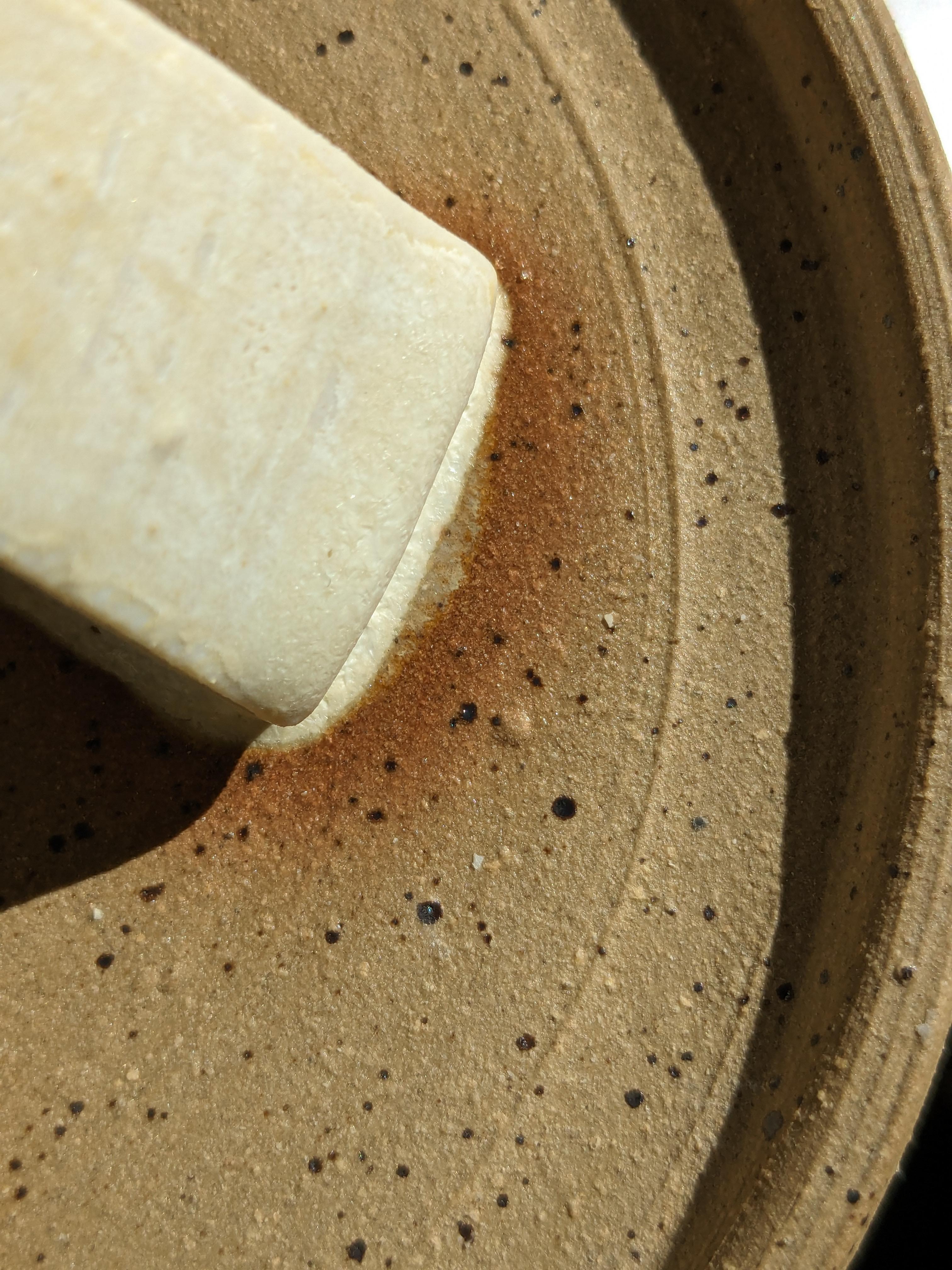
White to buff clay bodies can sometimes turn bright yellows, reds, and oranges in the glaze firing. The effect is most apparent in soda firings but is also possible to create with other methods. I've looked around and haven't been able to find a specific term for this phenomenon, so I'm calling it alkali flashing as it is primarily caused by sodium and potassium - alkali metals - being vaporized in the kiln.
The Japanese term is hiiro, typically written as 緋色 (scarlet) and sometimes as 火色 (flame-colored).
These are the requirements for alkali flashing, listed from strongest to weakest:
This is a summary of Scientific Study of Hidasuki Pattern on Bizen Stoneware. Kusano et al. used electron microscopes to study Hidasuki, which uses rice straw to flash patterns on stoneware.
This explains some properties of alkali flashing:
Gail Nichols mentions that clays with added Alumina Hydrate or Calcined Alumina do not flash in soda firing (Soda, Clay and Fire, page 41). I think the reason is that pure sources of Al2O3 are hard to melt and therefore cannot recrystallize with Fe2O3.
Soda ash (sodium carbonate) is sprayed or thrown into the kiln. The sodium vaporizes and flashes on the clay.
Using potassium carbonate should produce similar results. I would not expect whiting (calcium carbonate) to flash red because it is an alkali earth flux.
Wood firing can also cause flashing because wood naturally contains some sodium and potassium. Like in soda firing, the alkali salts are vaporized and deposited on the pots. Because the concentration of salts is lower than in soda firing, the flashing is smoother and more subdued.
Pots do not flash where covered in wood ash. Wood ash is very high in calcium and magnesium, which suppress the alkali flashing.
Tougei Shop sells a clay body called Anagama Hiiro. They claim that the flashing is caused in part by iron salts in the clay (More on soluble salts below).
可窖窯火色用の基本粘土です。粘土中の水酸化鉄が乾燥で作品の表面に集まり、焼成時に燃料薪のアルカリ蒸気中のカリ、ソーダ分と反応して緋色が発生します。
A basic clay that can flash hiiro in anagamas. When pots dry, iron hydroxides gather on the surface. During firing, the iron reacts with sodium and potassium alkali metals vaporized from the firewood, producing hiiro.
Alkali (sodium and potassium) salts inherent in the clay body or introduced via glazing can cause flashing on stonewares. See Soluble Glaze Ingredients.
Some glaze ingredients are slightly soluble. These include some feldspars and frits. On episode 40 of For Flux's Sake, Rose and Matt Katz from the Ceramic Materials Workshop explain that soluble salts in glaze can migrate into a clay body, leaving flashing marks just beyond where the glaze stops. Glazes that have been in storage for a long time can have a higher concentration of alkali salts; freshly prepared glazes are less likely to flash.
You can purposely add soda ash to glazes to encourage flashing. Soda ash is typically added to Shino glazes, but can be added to any glaze.
Ball clays inherently contain soluble salts. Tony Hansen created several clay bodies by mixing 2 parts ball clay to 1 part nepheline syenite. He dried the samples while partially covered to force the salts to gather in an outer ring. When fired to cone 6, the clay bodies showed flashing in the outer ring.
Shino Glazes are red because of the same phenomenon. Shinos are high feldspar, low alkali earth glazes. Since feldspars are high in sodium and potassium, ions either volatilize during firing or are dissolved into the glaze water. Either way, alkali oxides find their way onto the clay body and flash. Traditional Japanese Shinos do not have added solubles, but American recipes typically contain 15% to 20% soda ash.
Hidasuki, meaning fire chord, is a type of decoration from Bizen ware. Rice straw is wrapped around pots and the sodium and potassium in the straw is vaporized during firing. The result are bright red lines where the straw touched the pots.
This is a slightly unusual method: Tony Hansen has been able to create flashing by resting a nepheline syenite tile against a cup in bisque firing. Even at these low temperatures, sodium and potassium vapors from neph sye are released and deposited onto the cup. During the glaze firing, the unglazed areas flash red.
This shows that not only does Neph Sye emit alkali vapors, it does so at very low temperatures.
This Cosmic Indifference test tile has had its flux vaporized and deposited onto the glaze catcher. I'm not sure what material(s) caused it as it contains less than 20% neph sye.
Created . Updated .
Home > Q Science > QD Chemistry > Alkali Flashing